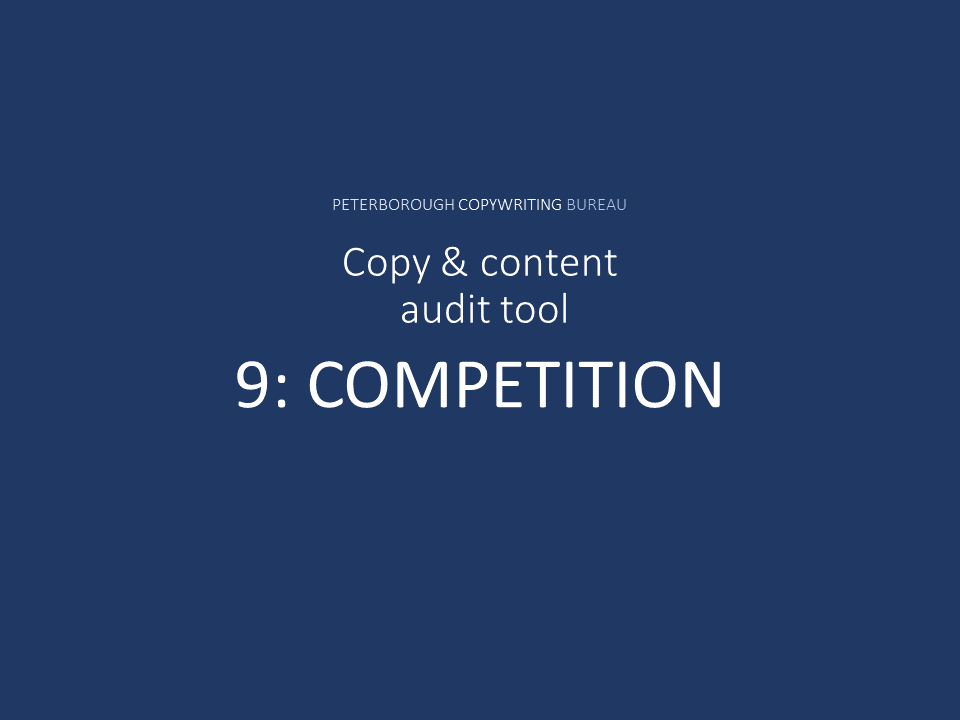A competitor analysis should feature in any assessment of your copy and content. Your customers are likely to be looking at competitor content too, so it makes sense to see how yours compares.
NOTE: This is part 9 in a ten-part serialisation of my eBook. Please read the introduction first if you are new to the tool.
You can use other criteria in this audit tool framework to score against similar competitor content, seeing how it matches up against yours in a head-to-head. For example, is competitor content more comprehensive than yours, or more customer-focused?
For online content this step starts with Googling to find competitor content similar to yours. But don’t just use the obvious on-page copy for this comparison. Dig deep to see if competitors are publishing white papers, eBooks, videos, webinars, podcasts, slides, infographics, FAQs, case studies, how-to guides and so on.

I like to print out a few examples and get my Sharpies out. I annotate with notes on what I would like/dislike about the competitor content if I were a reader within the target audience. I also try to identify any information gaps that my piece could fill.
Some solutions to ‘competition’ problems
If you have assessed a single piece of content against a comparable piece from a competitor, the solution to any problems will be fairly obvious. Identify where your piece is falling short and do whatever it takes to bring it up to a better standard.
You may need to involve colleagues on this one. For example, if a competitor piece has impressive stats on their customer satisfaction levels, you might need to ask whoever measures that stuff in your company for similar stats.
If the actual content of your piece is OK but it still seems poor compared to competitors, it could be that the voice or personality of the piece needs refreshing. Arm yourself with your favourite beverage, shut yourself away from distractions and turn the copy into something much more impactful.
Assessing overall content competitiveness
All the above refers to assessing and improving individual pieces of content. It’s worth also mentioning some things you can look at and do to improve the performance of your overall content strategy compared to competitors.
Five criteria to consider are:
Volume.
Does your total amount of content look slim compared to what your competitors offer?
Publishing frequency.
If you publish news or a blog every couple of months and your competitors do it weekly, you may have a problem. (An easy fix to hide the fact that your frequency is poor is to remove dates from blogs, if you are blogging ‘evergreen’ content that will always be relevant.)
Subject matter.
Are competitors covering subjects that you haven’t even thought of? (Or thought of but never got around to covering?)
Social media engagement.
The level of likes, shares and comments competitor content is getting could be an indicator of how well their content strategy is resonating with audiences.
Traffic and SEO performance.
Tools like Alexa, Moz and SEMrush can tell you how well competitor content is performing in terms of the traffic it’s attracting and its SEO performance.

